November 18, 2016 at 4:05 pm
[caption id="attachment_2068" align="alignright" width="456"]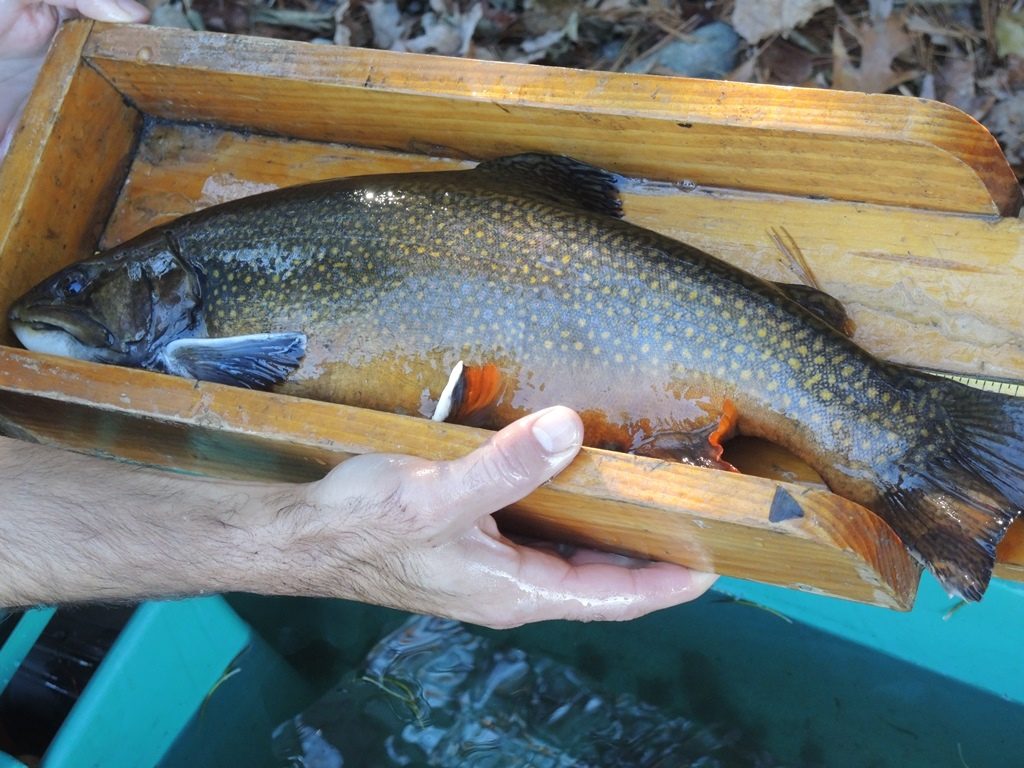 By reducing the number of fish stocked, you can help increase just how fast a fish grows.[/caption]
Many anglers associate big trout and salmon with northern Maine. While certainly there are a number of northern Maine lakes where you can catch three-pound trout and salmon, there also are waters in southern and central Maine that hold large trout and salmon as well.
Most of Maine’s southern and central coldwater fisheries are maintained through stocking. But ponds aren’t stocked with trophy fish, they are managed to create that type of fishery.
[caption id="attachment_2064" align="alignleft" width="438"]
By reducing the number of fish stocked, you can help increase just how fast a fish grows.[/caption]
Many anglers associate big trout and salmon with northern Maine. While certainly there are a number of northern Maine lakes where you can catch three-pound trout and salmon, there also are waters in southern and central Maine that hold large trout and salmon as well.
Most of Maine’s southern and central coldwater fisheries are maintained through stocking. But ponds aren’t stocked with trophy fish, they are managed to create that type of fishery.
[caption id="attachment_2064" align="alignleft" width="438"]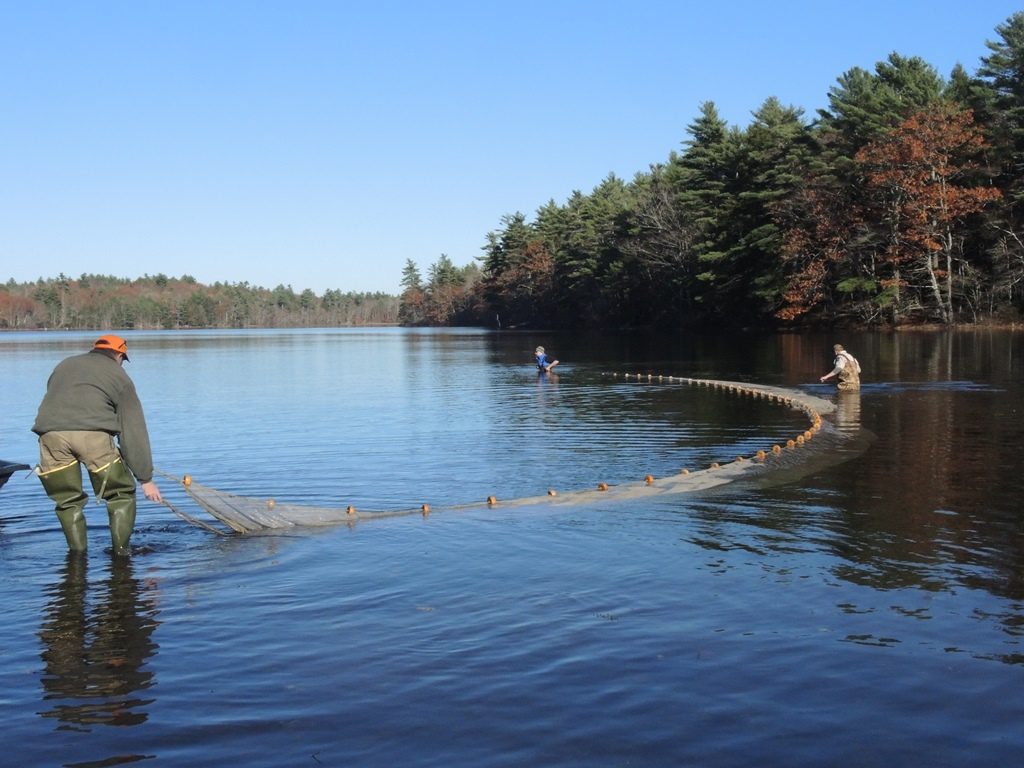 IFW staffers Jason Seiders, Tom Barrows and Wes Ashe stretch the seine net across the water in order to capture brook trout.[/caption]
It’s a balancing act, and IFW fisheries biologists rely heavily on biological data they capture in the fall to maintain those fisheries. Stock too many fish, and they don’t grow or they become extremely thin. If you don’t stock enough fish, catch rates go down for anglers and other aquatic species may fill the void. Regulations regarding how many you can keep and how large they have to be also impact fisheries.
Region B biologists were recently at one central Maine pond gathering data. Utilizing a seine net, they captured 14 brook trout that were at the tail end of their spawning season.
The trout captured varied in length from 13” to 20”, but perhaps more impressive was that they weight anywhere from 1.3 pounds up to 4.1 pounds. These football-shaped fish would make any angler happy.
For many years, this pond was stocked with 600 trout. This past year, biologists decreased that number to 500. Over the next few years, IFW staff will be looking to see what type of impact this will have on the fishery, but they believe it will increase growth even further.
[caption id="attachment_2065" align="alignright" width="375"]
IFW staffers Jason Seiders, Tom Barrows and Wes Ashe stretch the seine net across the water in order to capture brook trout.[/caption]
It’s a balancing act, and IFW fisheries biologists rely heavily on biological data they capture in the fall to maintain those fisheries. Stock too many fish, and they don’t grow or they become extremely thin. If you don’t stock enough fish, catch rates go down for anglers and other aquatic species may fill the void. Regulations regarding how many you can keep and how large they have to be also impact fisheries.
Region B biologists were recently at one central Maine pond gathering data. Utilizing a seine net, they captured 14 brook trout that were at the tail end of their spawning season.
The trout captured varied in length from 13” to 20”, but perhaps more impressive was that they weight anywhere from 1.3 pounds up to 4.1 pounds. These football-shaped fish would make any angler happy.
For many years, this pond was stocked with 600 trout. This past year, biologists decreased that number to 500. Over the next few years, IFW staff will be looking to see what type of impact this will have on the fishery, but they believe it will increase growth even further.
[caption id="attachment_2065" align="alignright" width="375"]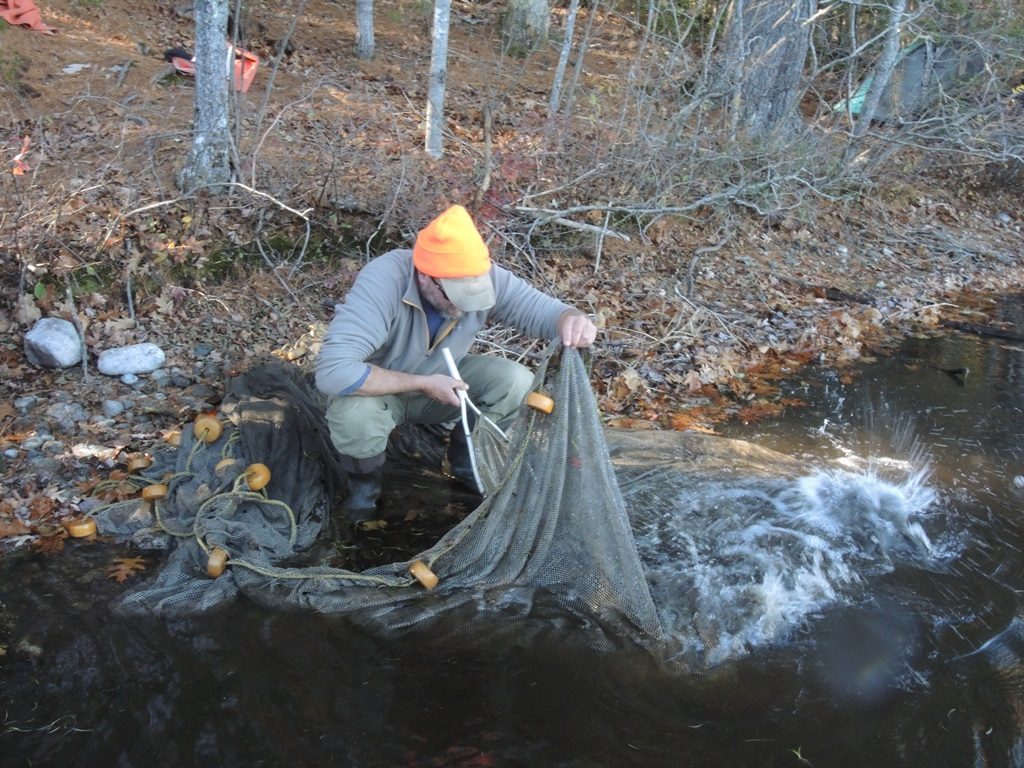 IFW fisheries biologist Scott Davis looks to scoop out a trout from the seine net.[/caption]
In the meantime, anglers are enjoying the chance of catching a trophy fish close to home. Even though this water is managed for larger fish at the expense of catching high numbers of fish, judging by the number of boats stashed along the shore, anglers don’t mind that trade.
If you are looking for a chance at a large trout or salmon in the central Maine region, you may want to try Alford Lake for trophy browns, Spectacle Pond for trophy browns and brookies, Basin Pond for trophy splake and Pleasant Pond for trophy salmon.
All of these stocked fisheries have very good water quality and through researched stocking rates, active monitoring and responsive management are producing trophy fish.
[caption id="attachment_2063" align="alignleft" width="343"]
IFW fisheries biologist Scott Davis looks to scoop out a trout from the seine net.[/caption]
In the meantime, anglers are enjoying the chance of catching a trophy fish close to home. Even though this water is managed for larger fish at the expense of catching high numbers of fish, judging by the number of boats stashed along the shore, anglers don’t mind that trade.
If you are looking for a chance at a large trout or salmon in the central Maine region, you may want to try Alford Lake for trophy browns, Spectacle Pond for trophy browns and brookies, Basin Pond for trophy splake and Pleasant Pond for trophy salmon.
All of these stocked fisheries have very good water quality and through researched stocking rates, active monitoring and responsive management are producing trophy fish.
[caption id="attachment_2063" align="alignleft" width="343"]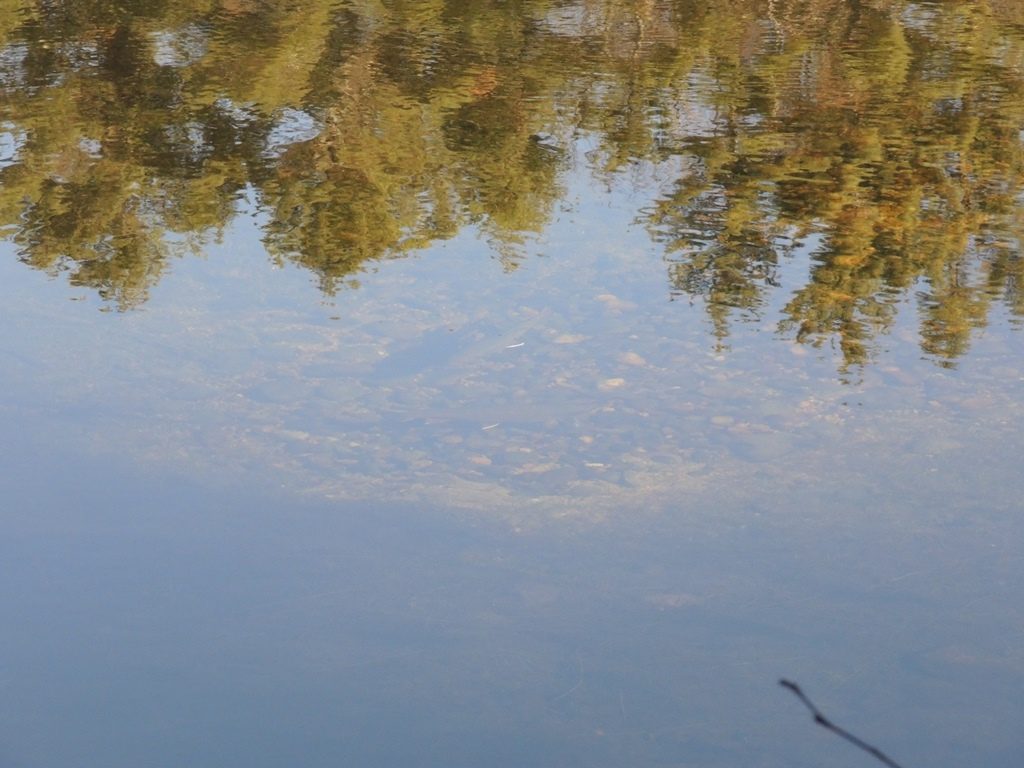 Spawing habitat is limited in this pond, but that doesn't stop the brook trout from creating and guarding spawning redds.[/caption]
[caption id="attachment_2069" align="aligncenter" width="382"]
Spawing habitat is limited in this pond, but that doesn't stop the brook trout from creating and guarding spawning redds.[/caption]
[caption id="attachment_2069" align="aligncenter" width="382"] IFW fisheries assistant Tom Barrows prepares to release a nice brook trout.[/caption]
[caption id="attachment_2066" align="alignright" width="289"]
IFW fisheries assistant Tom Barrows prepares to release a nice brook trout.[/caption]
[caption id="attachment_2066" align="alignright" width="289"]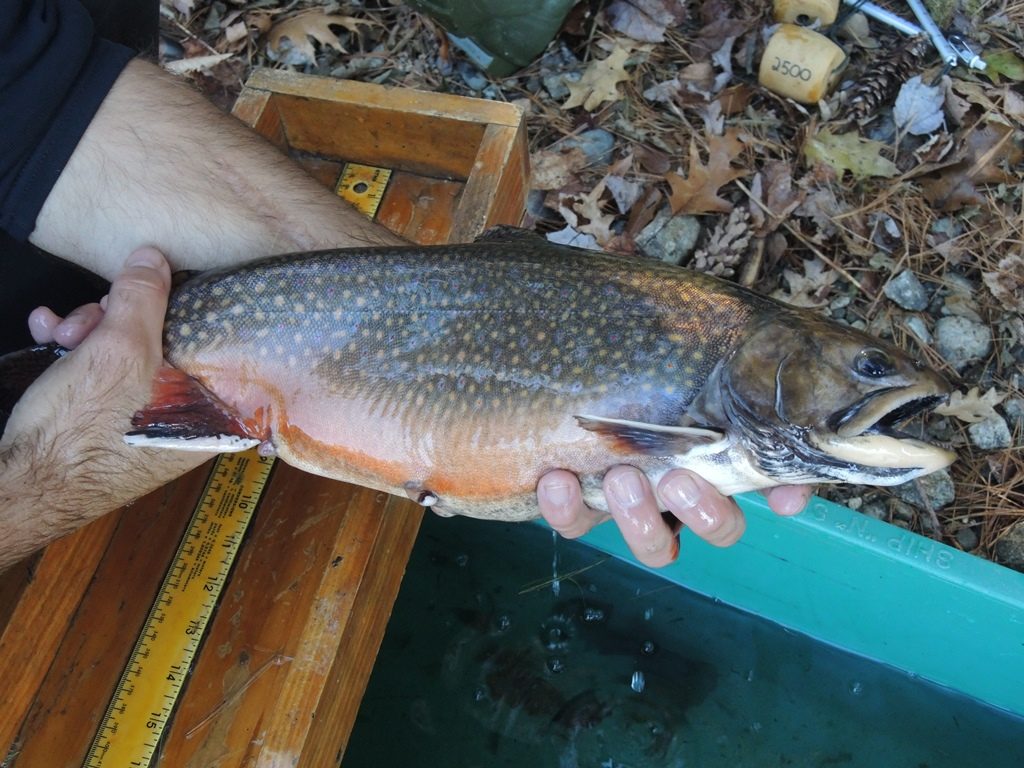 This football-shaped brookie was measured, weighed and released.[/caption]
This football-shaped brookie was measured, weighed and released.[/caption]
 By reducing the number of fish stocked, you can help increase just how fast a fish grows.[/caption]
Many anglers associate big trout and salmon with northern Maine. While certainly there are a number of northern Maine lakes where you can catch three-pound trout and salmon, there also are waters in southern and central Maine that hold large trout and salmon as well.
Most of Maine’s southern and central coldwater fisheries are maintained through stocking. But ponds aren’t stocked with trophy fish, they are managed to create that type of fishery.
[caption id="attachment_2064" align="alignleft" width="438"]
By reducing the number of fish stocked, you can help increase just how fast a fish grows.[/caption]
Many anglers associate big trout and salmon with northern Maine. While certainly there are a number of northern Maine lakes where you can catch three-pound trout and salmon, there also are waters in southern and central Maine that hold large trout and salmon as well.
Most of Maine’s southern and central coldwater fisheries are maintained through stocking. But ponds aren’t stocked with trophy fish, they are managed to create that type of fishery.
[caption id="attachment_2064" align="alignleft" width="438"] IFW staffers Jason Seiders, Tom Barrows and Wes Ashe stretch the seine net across the water in order to capture brook trout.[/caption]
It’s a balancing act, and IFW fisheries biologists rely heavily on biological data they capture in the fall to maintain those fisheries. Stock too many fish, and they don’t grow or they become extremely thin. If you don’t stock enough fish, catch rates go down for anglers and other aquatic species may fill the void. Regulations regarding how many you can keep and how large they have to be also impact fisheries.
Region B biologists were recently at one central Maine pond gathering data. Utilizing a seine net, they captured 14 brook trout that were at the tail end of their spawning season.
The trout captured varied in length from 13” to 20”, but perhaps more impressive was that they weight anywhere from 1.3 pounds up to 4.1 pounds. These football-shaped fish would make any angler happy.
For many years, this pond was stocked with 600 trout. This past year, biologists decreased that number to 500. Over the next few years, IFW staff will be looking to see what type of impact this will have on the fishery, but they believe it will increase growth even further.
[caption id="attachment_2065" align="alignright" width="375"]
IFW staffers Jason Seiders, Tom Barrows and Wes Ashe stretch the seine net across the water in order to capture brook trout.[/caption]
It’s a balancing act, and IFW fisheries biologists rely heavily on biological data they capture in the fall to maintain those fisheries. Stock too many fish, and they don’t grow or they become extremely thin. If you don’t stock enough fish, catch rates go down for anglers and other aquatic species may fill the void. Regulations regarding how many you can keep and how large they have to be also impact fisheries.
Region B biologists were recently at one central Maine pond gathering data. Utilizing a seine net, they captured 14 brook trout that were at the tail end of their spawning season.
The trout captured varied in length from 13” to 20”, but perhaps more impressive was that they weight anywhere from 1.3 pounds up to 4.1 pounds. These football-shaped fish would make any angler happy.
For many years, this pond was stocked with 600 trout. This past year, biologists decreased that number to 500. Over the next few years, IFW staff will be looking to see what type of impact this will have on the fishery, but they believe it will increase growth even further.
[caption id="attachment_2065" align="alignright" width="375"] IFW fisheries biologist Scott Davis looks to scoop out a trout from the seine net.[/caption]
In the meantime, anglers are enjoying the chance of catching a trophy fish close to home. Even though this water is managed for larger fish at the expense of catching high numbers of fish, judging by the number of boats stashed along the shore, anglers don’t mind that trade.
If you are looking for a chance at a large trout or salmon in the central Maine region, you may want to try Alford Lake for trophy browns, Spectacle Pond for trophy browns and brookies, Basin Pond for trophy splake and Pleasant Pond for trophy salmon.
All of these stocked fisheries have very good water quality and through researched stocking rates, active monitoring and responsive management are producing trophy fish.
[caption id="attachment_2063" align="alignleft" width="343"]
IFW fisheries biologist Scott Davis looks to scoop out a trout from the seine net.[/caption]
In the meantime, anglers are enjoying the chance of catching a trophy fish close to home. Even though this water is managed for larger fish at the expense of catching high numbers of fish, judging by the number of boats stashed along the shore, anglers don’t mind that trade.
If you are looking for a chance at a large trout or salmon in the central Maine region, you may want to try Alford Lake for trophy browns, Spectacle Pond for trophy browns and brookies, Basin Pond for trophy splake and Pleasant Pond for trophy salmon.
All of these stocked fisheries have very good water quality and through researched stocking rates, active monitoring and responsive management are producing trophy fish.
[caption id="attachment_2063" align="alignleft" width="343"] Spawing habitat is limited in this pond, but that doesn't stop the brook trout from creating and guarding spawning redds.[/caption]
[caption id="attachment_2069" align="aligncenter" width="382"]
Spawing habitat is limited in this pond, but that doesn't stop the brook trout from creating and guarding spawning redds.[/caption]
[caption id="attachment_2069" align="aligncenter" width="382"] IFW fisheries assistant Tom Barrows prepares to release a nice brook trout.[/caption]
[caption id="attachment_2066" align="alignright" width="289"]
IFW fisheries assistant Tom Barrows prepares to release a nice brook trout.[/caption]
[caption id="attachment_2066" align="alignright" width="289"] This football-shaped brookie was measured, weighed and released.[/caption]
This football-shaped brookie was measured, weighed and released.[/caption]
Categories